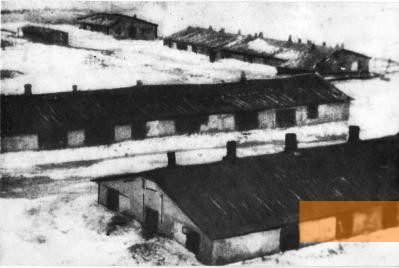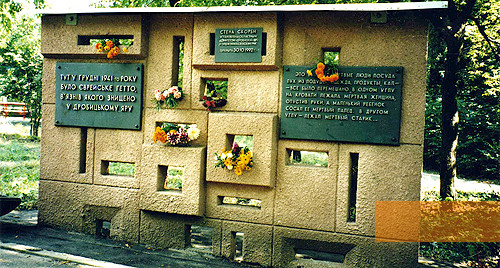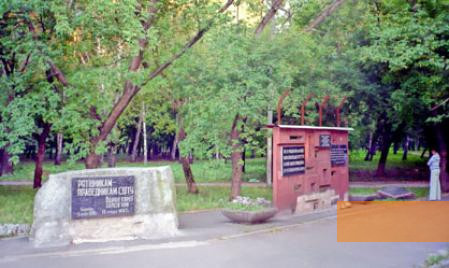Since 1992, a »Wall of Mourning« in the Ukrainian Kharkov (Ukrainian: Kharkiv) commemorates the Jewish residents murdered in 1941 and 1942. The memorial wall is situated at the border of the former ghetto area.
Before 1941, Kharkov was home to one of the largest Jewish communities in the Soviet Union, consisting of about 130,000 members. A majority of them could flee from the approaching German Wehrmacht in the summer of 1941. Kharkov was occupied by the Wehrmacht on October 23, 1941. In November 1941, the German military administration introduced strict food rationing for the Jews of Kharkov - compared to the already slim rations for the remaining population, the Jews now only received 40 per cent of that. In addition, the military commander of the occupied territories ordered hostage-taking, shootings and hangings of Jews. On November 26, the Sonderkommando 4a (mobile killing unit) under the command of Paul Blobel, reached the city. Many Jews were arrested, tortured and finally murdered in »gas vans«. On December 14, 1941, over 15,000 Kharkov Jews had to go to a tractor factory twelve kilometres away at the behest of the city commander. There they were interned; many died of hunger or froze in the unheated and unsanitary sheds. At the beginning of January 1942, members of the Sonderkommando began to systematically murder the Jews: supported by Police Battalion 314 and units of the Waffen-SS, the Sonderkommando brought the Jews in groups in trucks to the Drobitskiy ravine (Drobitskiy Yar). There they shot around 15,000 Jews or asphyxiated them with engine exhaust fumes in »gas vans«.
In all, between 15,000 and 21,000 Jews from Kharkov perished in the mass murders conducted by the German occupiers and the Sonderkommando 4a (mobile killing unit) in the years 1941 and 1942.
The »Komitet Drobitskiy Yar« set up the memorial wall at the edge of the former ghetto area on September 30, 1992.
- Name
- Меморіал "Стена скорби"
- Phone
- +385 7700-49-90
- Web
- http://holocaustmuseum.kharkov.ua/
- kharkovholocaustmuseum@gmail.com
- Open
- The memorial is accessible at all times.




